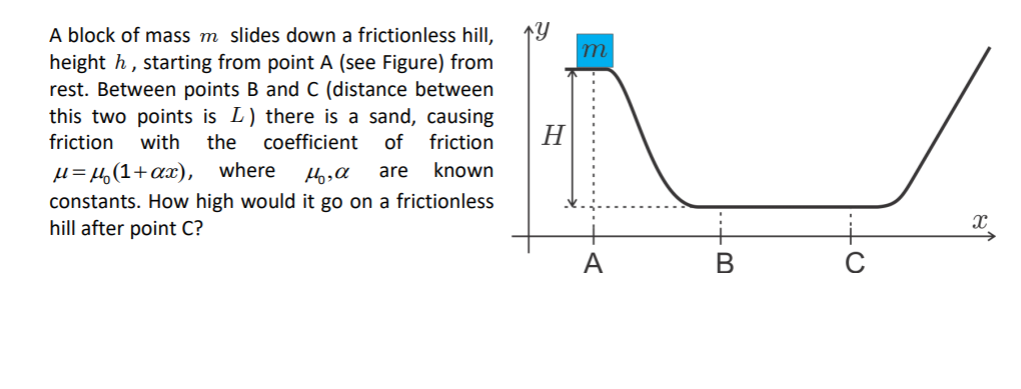A block of mass m slides down a frictionless hill, height h, starting from point A (see Figure) from rest. Between points B and C (distance between this two points is L) there is a sand, causing coefficient Н friction with the of friction µ = H,(1+ax), where known are Ho,a constants. How high would it go on a frictionless hill after point C?
A block of mass m slides down a frictionless hill, height h, starting from point A (see Figure) from rest. Between points B and C (distance between this two points is L) there is a sand, causing coefficient Н friction with the of friction µ = H,(1+ax), where known are Ho,a constants. How high would it go on a frictionless hill after point C?
Related questions
Question
need help on this one

Transcribed Image Text:A block of mass m slides down a frictionless hill,
height h, starting from point A (see Figure) from
rest. Between points B and C (distance between
this two points is L) there is a sand, causing
coefficient
Н
friction
with
the
of
friction
µ = H,(1+ax),
where
known
are
Ho,a
constants. How high would it go on a frictionless
hill after point C?
Expert Solution
This question has been solved!
Explore an expertly crafted, step-by-step solution for a thorough understanding of key concepts.
This is a popular solution!
Trending now
This is a popular solution!
Step by step
Solved in 3 steps with 3 images
